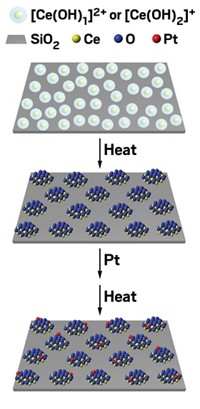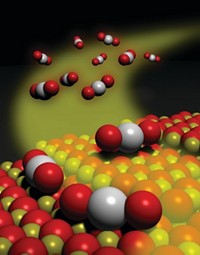Advertisement
Grab your lab coat. Let's get started
Welcome!
Welcome!
Create an account below to get 6 C&EN articles per month, receive newsletters and more - all free.
It seems this is your first time logging in online. Please enter the following information to continue.
As an ACS member you automatically get access to this site. All we need is few more details to create your reading experience.
Not you? Sign in with a different account.
Not you? Sign in with a different account.
ERROR 1
ERROR 1
ERROR 2
ERROR 2
ERROR 2
ERROR 2
ERROR 2
Password and Confirm password must match.
If you have an ACS member number, please enter it here so we can link this account to your membership. (optional)
ERROR 2
ACS values your privacy. By submitting your information, you are gaining access to C&EN and subscribing to our weekly newsletter. We use the information you provide to make your reading experience better, and we will never sell your data to third party members.
Synthesis
Hollow Platinum Nanoparticles Boost Reaction Efficiency
Materials: Shells of the precious metal just a few atoms thick serve as active, robust catalysts
by Mitch Jacoby
July 23, 2015
| A version of this story appeared in
Volume 93, Issue 30

Waste not, want not. The familiar adage applies equally well to cooks, carpenters, and catalyst manufacturers. The last group has long tried to figure out ways to maximize the use of precious metals used for making catalysts. A new method for preparing hollow platinum nanocrystals just a few atoms thick may give those efforts a needed boost (Science 2015, DOI: 10.1126/science.aab0801).
A standard way to optimize the amount of metal used in a catalyst is to reduce the size of the catalyst particles. The smaller the particle, the greater the fraction of atoms that reside on its surface, where they are accessible to catalyze chemical reactions.
Chemists can prepare metal particles just a couple of nanometers in diameter and disperse them on a support structure. But under typical high-temperature and high-pressure industrial reaction conditions, such small particles tend to diffuse and coalesce, forming larger clumps, or they detach from the support material, any of which reduces catalytic activity.
Now, Lei Zhang and Younan Xia of Georgia Tech and colleagues have come up with a way to make hollow platinum nanoparticles with ultrathin walls that remain durable during extended catalytic reactions. The hollow nature of these atomically thin particles leaves a large fraction of the atoms accessible for catalysis, maximizing the particles’ activity.
The team first deposited just a few atomic layers of platinum on palladium nanocrystals and then selectively etched the palladium in an acid solution. The process yielded crystalline, hollow platinum shells—nanocages—just three or four atomic layers thick. The nanocages’ crystallinity was controlled by the palladium template particles. Cubic palladium cores led to shells with one type of crystal geometry and octahedral cores, a different geometry.
The group evaluated the nanocages’ catalytic properties by using them to mediate the oxygen reduction reaction, a classic fuel-cell process that converts oxygen to water. They found that octahedral platinum nanocages were roughly twice as active as cubic ones, and both types of particles were more active than solid, commercial platinum catalysts. They also found the new nanocages to be durable, losing just one-third of their activity after 10,000 catalytic cycles.
“This novel approach could promote the next breakthrough, not only in fuel-cell catalysis but also in water splitting and other catalytic systems,” remarks materials chemist Jiye (James) Fang of Binghamton University, SUNY. He adds that the catalytic activity of this unoptimized system may be enhanced by alloying platinum with other metals.




Join the conversation
Contact the reporter
Submit a Letter to the Editor for publication
Engage with us on Twitter